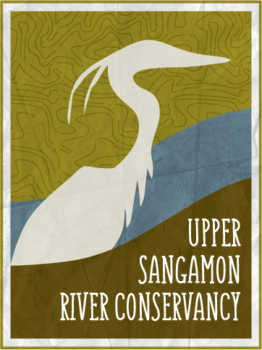After spending hours carefully creating that etch-a-sketch masterpiece, I give it a brisk shake and the masterpiece is gone, never to return. And there before me is a blank slate. Tabula rasa.
As much as people complain about Black Friday, having to find that perfect gift for their in-laws, or the general materialistic crush and crunch of the holiday season, nobody really wants to give up on stuff. Nobody really wants to actually shake their etch-a-sketch and make all that stuff disappear. Some do, but most that do, do so involuntarily, like the tornado victims in Gifford and my family just before Christmas 2007. These experiences, as awful as they are, give us the chance to discover the true meaning of stuff. Which is, as it turns out, not much.
This week I see pictures of the Village of Gifford being wiped clean. The high-hoes have moved in and the stuff of Gifford is moving out; being dragged to the edge of town and burned.
These pictures bring back memories of our own holidays here at our home on the Sangamon River. As I’ve written before, we experienced a house fire back in 2007 just 10 days before Christmas in which everything we had was lost in one cold, harsh, thirty degree morning.
And for many Gifford families, everything was lost in a few short seconds. Nature wiped clean lifetimes of creation about as easily as we shake an etch-a-sketch.
And now the residents of Gifford are experiencing their own collective house fires out on the edge of town. There goes the stuff, up in smoke. A blank slate; tabula rasa. The most interesting of holiday gifts.
When a person goes through a tabula rasa experience, they learn about the importance of stuff, or the lack thereof.
Before our fire, our house was filled with stuff we thought was somehow necessary. Stuff in the attic, stuff in the closets, stuff on the kitchen table, on the kitchen counter, the bedroom floor. And then in one morning, it was all gone. In a very brief moment, a blank slate. Tabula rasa.
And I hear, in interviews from Gifford residents, their thankfulness that (like our own experience) lives were not lost, just a lot of stuff. And, (like us) in their thankfulness at having actually come out alive after experiencing such a total disaster, it dawns on them: What the heck, most of that stuff wasn’t really all that necessary anyway.
And besides, the tabula rasa experience presents an opportunity to be better than we were before. People of my generation may recall the opening lines of television’s “Six Million Dollar Man” after astronaut Steve Austin crashed and burned in his experimental aircraft: “Gentlemen, we can rebuild him. We have the technology. Better than he was before.” And indeed we can, and we do.
Every loss creates an opportunity to rebuild: a fire, a storm, a flood. Every fire has its phoenix. Just like us in the Spring of 2008, those who lost homes in Gifford will soon start pouring over house plans, if they haven’t already.
The trick here is to learn the lesson of stuff. And the key is to remember. To never forget what stuff means and what it doesn’t. While, like our house fire and like the experience in Gifford, there has obviously been a loss of many valuable things that are never to return, but most things will return, most things can be rebuilt, most stuff can be rebought. Should it? Well, this is a (hopefully) once-in-a-lifetime opportunity to ponder that very question.
Hopefully, not everyone has to go through a tornado or house fire to realize what’s really important in our lives. In fact, the Winter Solstice soon upon us provides a symbolic reminder of darkness followed by light.
The season of the Winter Solstice is a season of steadily encroaching darkness, culminating in the longest, darkest night of the year, December 21, this year, conveniently, on a Saturday. Solstice night is the height of the darkness.
With the onset of winter, we experience through nature the symbolic “death” of our deciduous trees, and the symbolic “everlasting life” of the evergreen. Then sure enough, in spring the deciduous trees are also re-born to bloom another day, another season.
In our house on Solstice night, we honor the Solstice by taking a break from the holiday hustle and turning off the power at sunset (around 4:30!) and our family lives in the darkness and (relative) quiet of the evening.
Then the next day, the light returns. Even as the cold of winter is just setting in for the next several months, nature has already altered the equation. The days cease getting shorter and begin to lengthen again.
The Winter Solstice, and nearly all of our holiday traditions celebrate in one way or another, the return of light after darkness, the birth of the light.
My holiday wish is that no one’s house has to burn down or be blown away by an ill wind to teach the lesson of the tabula rasa. The Winter Solstice– metaphorically- -teaches the lesson that light follows darkness as inevitably as our planet turns. It teaches rebirth after loss with the beginning of yet another cycle of the sun. We can be wiped clean, lose everything, yet the light inevitably returns.
Through the darkness of the longest night of the year, we experience a symbolic loss, but we are also presented with the opportunity to remember what’s truly important and enduring in our lives. Our families, our loved ones. For me: Carol, Alex, Abbey, Olivia, my extended Florida family and all of the pets we share our home with.
Darkness may come. But light returns.
Yes, the masterpiece dissolves with little more than a shake of the etch-a-sketch, And then, I simply draw
a new masterpiece.
Appeared as Notes from the River, Mahomet Citizen, December 12, 2013 by Scott Hays


